Seeing With New Eyes
Seeing With New Eyes is about the way we see the world
How we choose to look at the world around us, what we choose to focus on, and what we end up seeing are all a reflection of who we are – a snapshot in time ... and a celebration of the panorama of possibilities that each of us carry in the world.
This work prompts an ongoing question and search for the keys to understanding perception and behaviour. What in our history, experiences, cultural conditioning, belief systems and our personal desires allow us to perceive so differently from each other? Discovering and celebrating our uniqueness is a major task in the human journey. Diversity is vital, but often leads to conflict when we are unable to appreciate the views and needs of others. I believe that a Seeing With New Eyes perspective could bring us closer to the Sounds True vision of creating a kinder and wiser world, by acting on the integrity embedded in a shared human understanding and appreciation of individual and cross-cultural differences.
For me it is all about how different levels of seeing, imagery and an accompanying sense of knowingness continue to lead me to a deeper awareness of my personal consciousness on Earth, and connect me to other non-dimensional ephemeral worlds in the cosmos.
My initial journey with seeing started, like most people, from being immersed in the beauty of the natural and built spaces of the physical world. I had lived on the west coast of Canada all my life, surrounded by ocean and mountains, mixed with a dabble of exotic landscapes during vacations abroad. This morphed when I met Courtney and moved to the Canadian Prairies. I initially felt the prairie landscape was boring and empty and I kept looking for something to fix my attention on -- like a hill! Through Courtney’s eyes, I gradually learned to appreciate the subtle color and texture of prairie grasses, the dramatic weather patterns, and the vitality of summer and winter extreme temperatures. And I came to love the understated small vignettes of hidden beauty contrasted with incredible expanses of land ~ as one can only see on the vast prairie horizons.
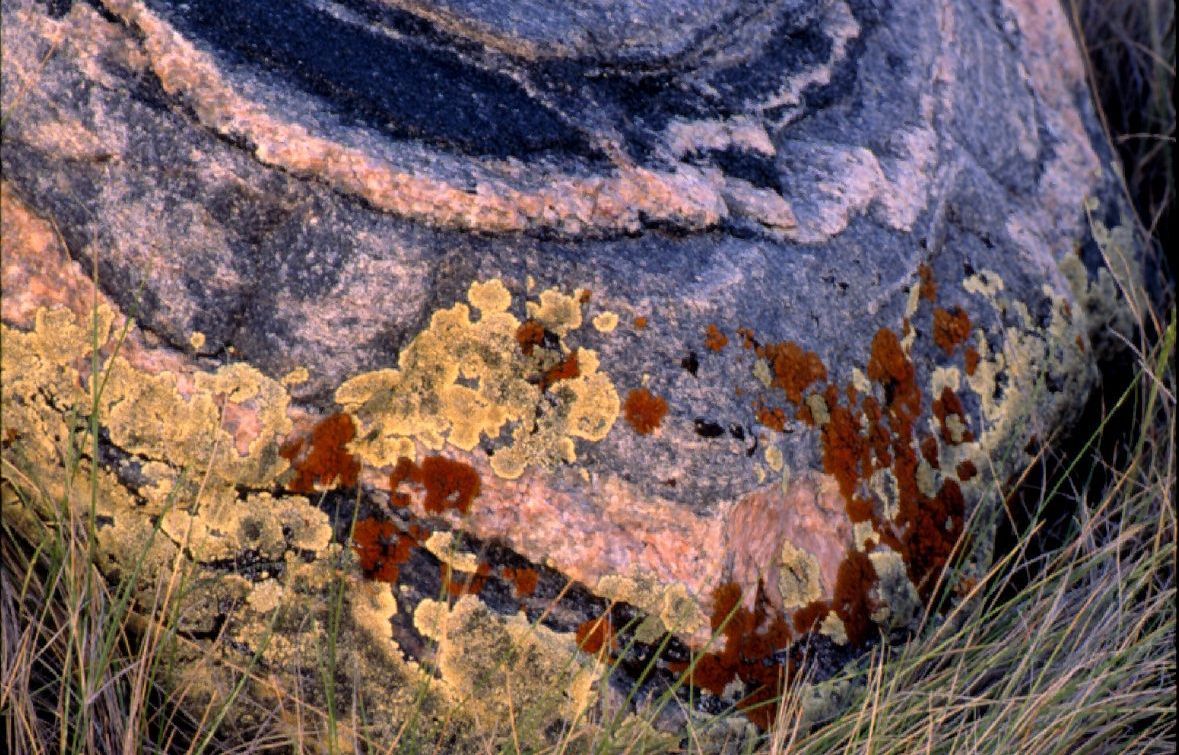
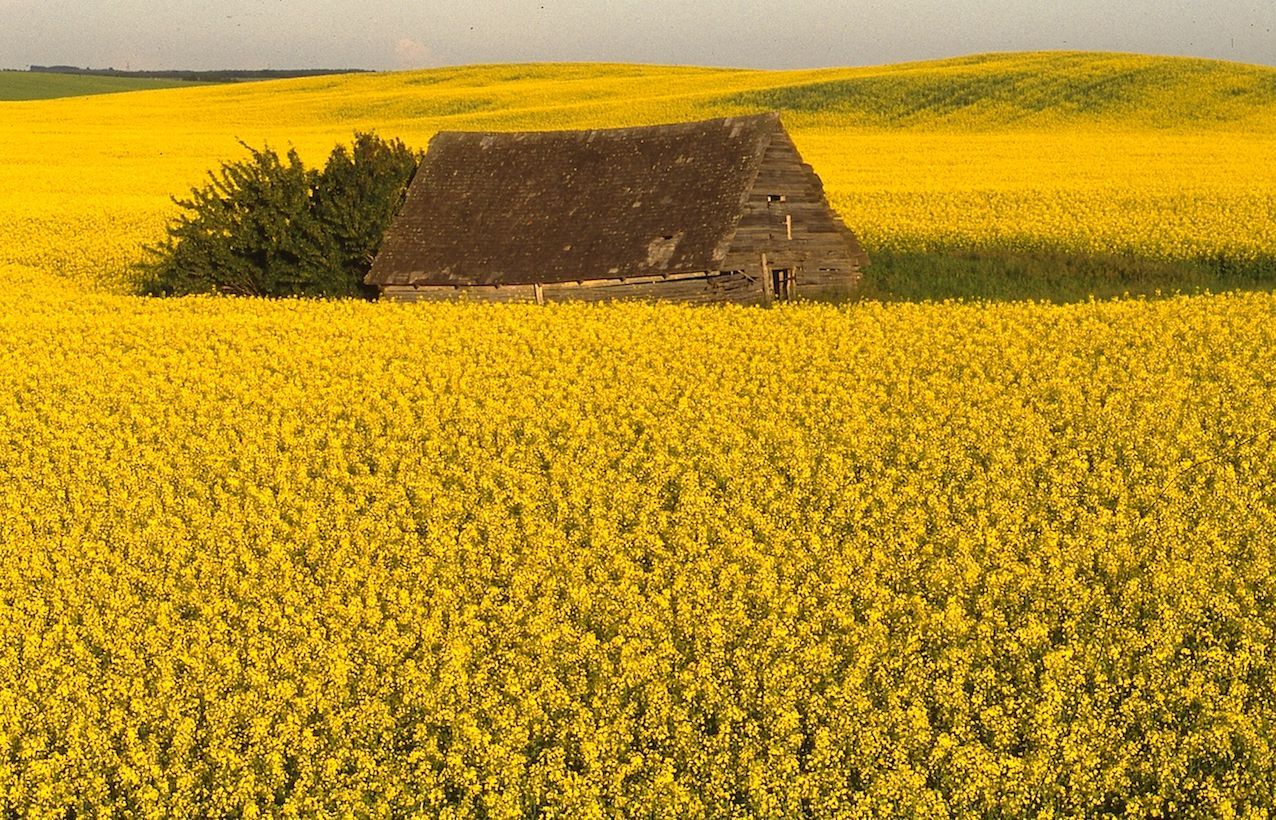
My vision was honed along with Courtney’s evolution in seeing. I think it would be true to say the main theme that emerged for him out of 35 years of photography is that the images we are drawn to are a reflection of our inner life and personal awareness. It probably started with his innate curiosity about life, and then became fully informed through the phenomenal diversity he witnessed through his camera lens.
He created this fractured golden image very early in his career, using a special filter on his manual camera ~ an example of his playful and curious nature.
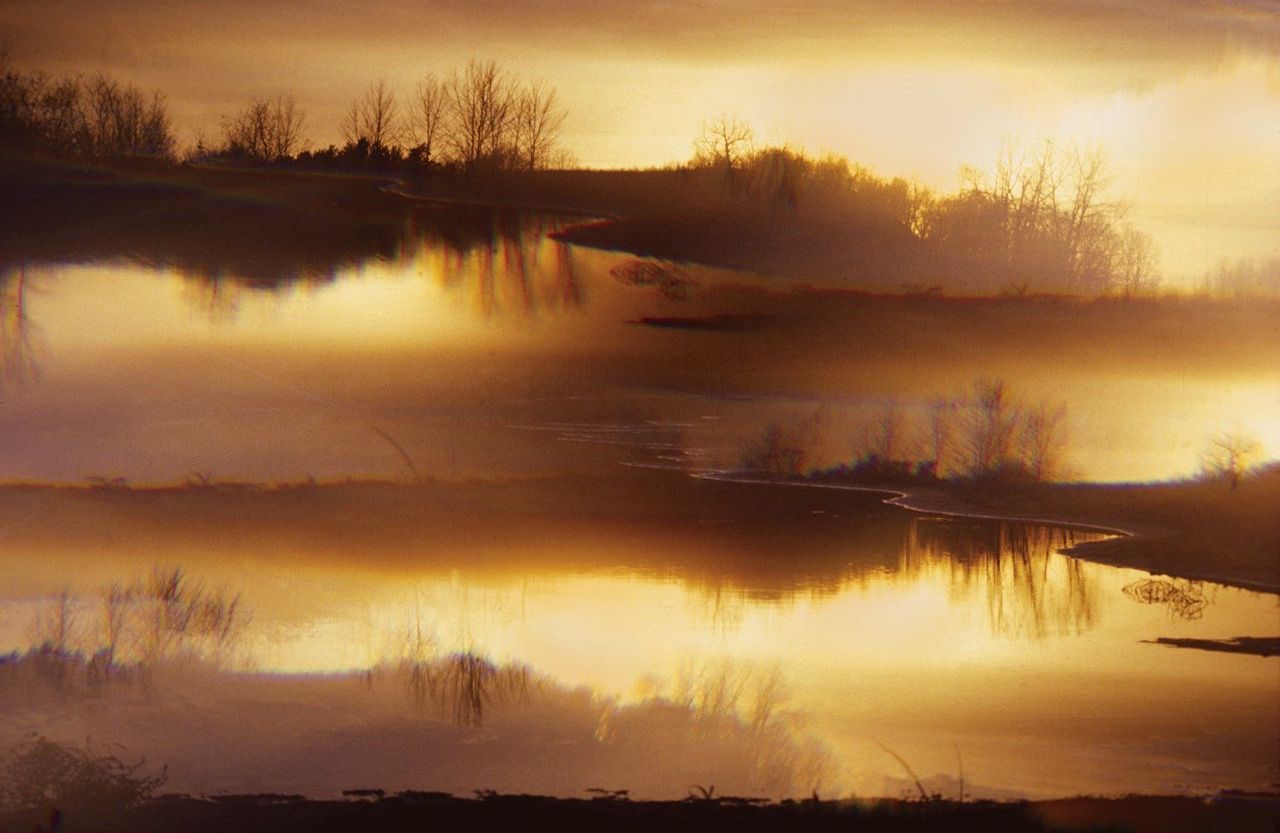
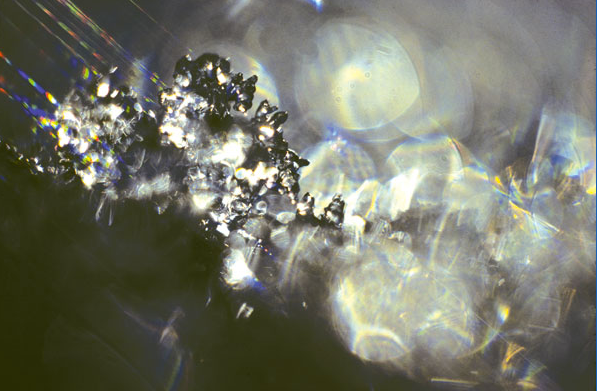
This childlike curiosity emerged again in a series of closeup images of a melting snowbank, the result of an “accidental” use of the “wrong” lens, which took him on a journey to what he subsequently called "the city of light." This became a favourite slide-show series [see
Gift of Change show in Ripple Effects-Coda] combined with prairie songstress Heather Bishop’s whimsical music ~ her words are a joyful inducement to
open to the tender voice deep down in your heart ... and say Yes to Life. Courtney’s passion shone through these images, but little did he anticipate where this might take his
seeing over the next twenty years.

There were many threads on this visual journey, moving from early documentary panoramas to small cameos of nature, then to impressionism and abstractions like in this fist-sized chunk of Australian opal rock, the detail invisible to the naked eye -- but the zoomed closeup lens reveals tiny natural fractures, turning it into a mysterious golden landscape reminiscent of a mountain pilgrimage. In
The Sacred Earth we named it Shambhala, an echo of the mythical harmonious world said to lie hidden beyond the Himalayas.

He experimented with camera techniques such as selective focus, camera motion or zooming the lens while taking the photo. Long before the advent of digital photography, he combined two or more images in what he called a ‘slide sandwich,’ that resulted in a unique new image such as this one that I named Cosmic Celebration, with the tiny silhouettes of grain elevators sheltered under a huge exploding ‘sky’ of a zoomed image on colourful fall foliage.
In his early presentations with slide projectors and carousels of images, Courtney used manual dissolves of 20 to 30 seconds between slides, weaving slides together that resulted in numerous intermediary combination-images that were magical beyond even his - or my - imagination! It made him wonder how to look anew, and what else might be seen through his viewfinder. By 1988 he was less drawn to the colour, the texture or the documentation of a place, but was starting to question how he could portray the ‘spirit in the land’ - how could he use his camera to capture that sense of mystique he was feeling in a physical place? My own curiosity echoed in that question.
This recognition of the spiritual backdrop of his seeing blossomed when Courtney was given a mysterious list of
The 12 Sacred Places of the Earth that resulted in our creating a series of large portfolio books over the next ten years:
The Sacred Earth, Spirit of the Land, and Visions of the Goddess, followed by the enchanting portrayal of prairie and mountain magic in WO Mitchell Country. The 2001 book,
Emily Carr Country, followed years of immersion in photographing forests and beaches on the west coast of Vancouver Island, BC. Artist-painter Emily Carr's journals tugged at his heart; he read them aloud to his photography students and urged them to follow her invitation to seek
the tremendous elsewhere that lies behind.
Surely this selective focus image of light bouncing through the trees captures the majesty and essence of Emily's vision of
forest.
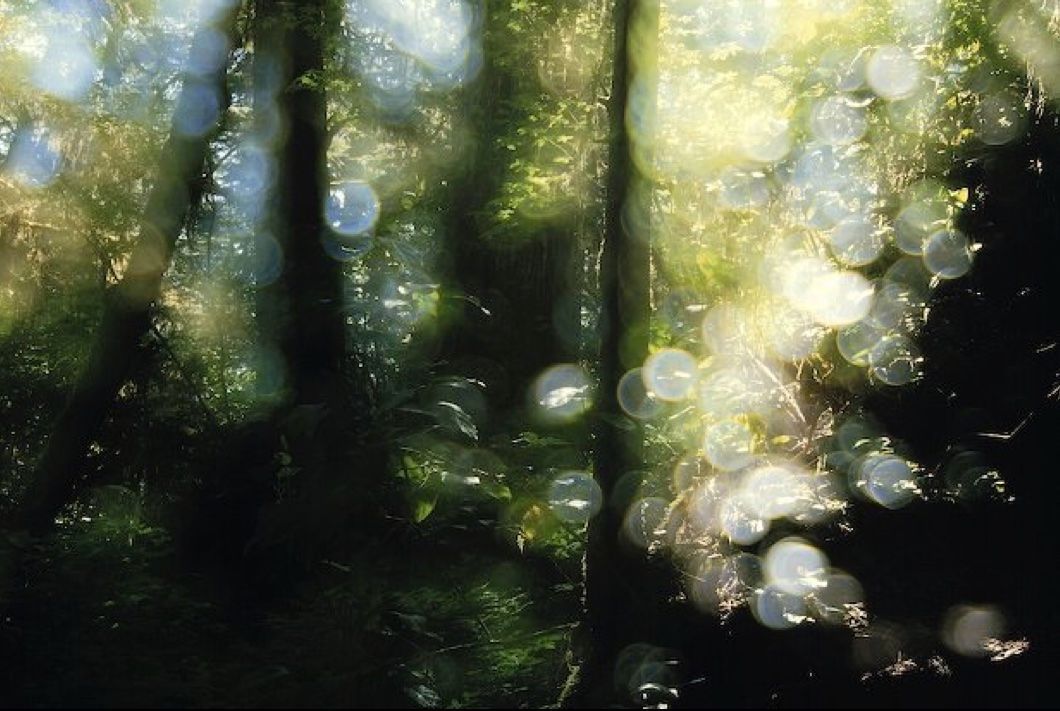
Finding himself with only one last roll of 36-exposure film while photographing in Claude Monet’s garden in Giverny, France, he started to play with multiple exposures on a single frame of film, resulting in his own brand of Monet impressionism.
This layered way of seeing was carried forward in many later explorations, but especially in the
Pool of Possibilities Collection.
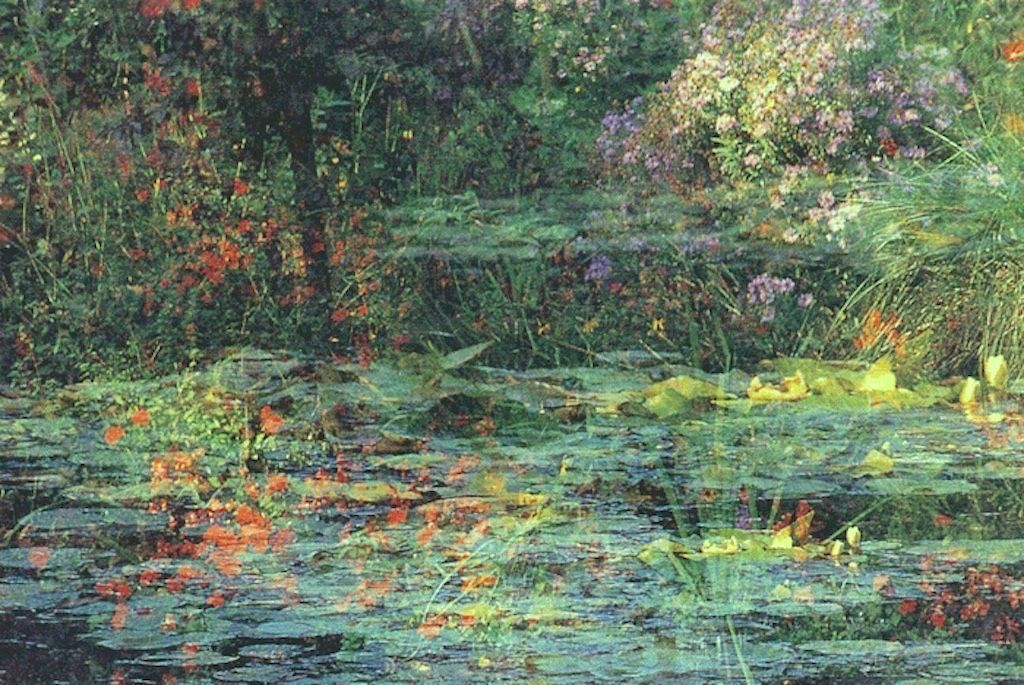
When we printed large 4x6 foot canvas reproductions of impressionistic images of the pool, people would exclaim: “Oh, Mr. Milne, I love your paintings ~ they look like Monet’s!”
Courtney would smile, reply ‘thank you’, and gently correct them, saying
actually they are photographs, but sometimes we call them ‘Milnay’s' ... and everyone would laugh.
This compelling journey into a different way of seeing was cemented for both of us when a fellow artist shared philosopher Marcel Proust’s quote: the real voyage of discovery consists not in seeking new landscapes but in having new eyes. Courtney then realized that despite photographing phenomenal landscapes on all seven continents, everything he needed to see was right in front of him, in the pool in our front yard.
He photographed it for 10 years, until the year before he died. [Pool Story by Sherrill]
He called it the Pool of Possibilities, and with some chagrin, wrote a poem about this self-revelation:
He searched the world over and what did he find?
That Earth’s greatest treasure is the ‘Eye’ of the mind.
For when he got home, as wise as a Fool,
He found the whole world right there in his pool.
This quest for ‘new eyes’ ~ being pushed to the edges of his seeing while photographing the pool, and in meditation ~ sometimes sitting on a cushion, but mostly through the viewfinder ~ guided all of his later work and photography teachings, as well as his own entry into that ‘tremendous elsewhere’ during his final journey with illness and death. palliative journey
However, looking back before the Seeing With New Eyes theme emerged, Courtney had long encouraged his photography students to question what their photographs echoed within themselves. With the 'new eyes' quest, together we took those insights a step further in our
Inner Landscapes workshops. Courtney and I both called upon our backgrounds in psychology, weaving our life experience with his images to create inquiries to prompt personal intuition and imagination, so that each participant could build a deeper understanding about their own life and their individual personal consciousness. In subsequent years I evolved this work as
Portal One under the umbrella of
Landscapes of Consciousness.
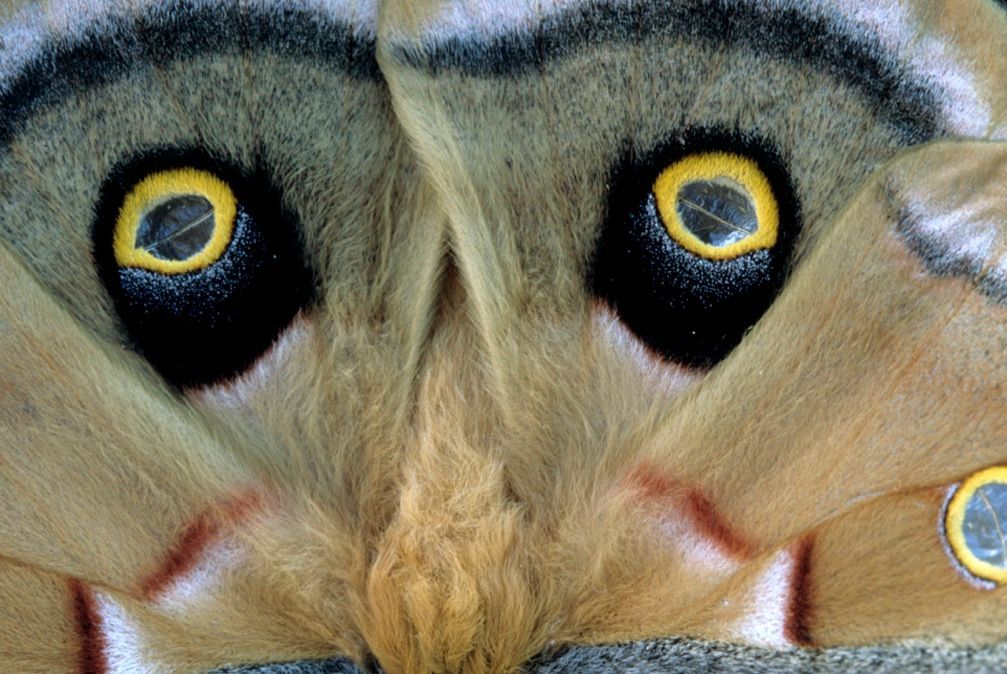
The way our brains recognize and respond to situations, combined with our personal awareness and habitual life patterning all act together to direct our attention on a regular basis, while beliefs, life experience and personality underlie and guide every decision we make about life. Adding Proust’s notion of seeing with new eyes is a serious invitation to change one’s way of being in the world.
Serendipitously, Seeing With New Eyes also has a lighter side. For ease of writing, I created the acronym SWNE to describe this work. When I asked my sister Lorraine to review some text, she thought SWNE was an auto-correction error – she thought I meant ‘swoon.’ I was delighted! The dictionary definition of ‘swoon’ is: to faint, lose awareness, often due to a state of extreme emotion accompanied by ecstasy or rapture. Indeed, that is precisely what SWNE requires us to do: to let go of our usual state of mind and ‘fall’ into a different level of consciousness. So, tongue-in-cheek, I created this logo, born through what might be called a Freudian slip ... an unconscious ‘mistake’ (or maybe a gift from the Divine) that led me to a new level of understanding ...

... because it IS a matter of swooning – of falling out of our usual way of behaving, modifying habits and beliefs that keep us from seeing new possibilities, and creating new brain pathways that allow us to view the world through a lens of wonder and awe.
Enthusiasm is an overused term that dilutes its original meaning, which comes from the Greek word, Entheos, meaning ‘infused with divine essence or spirit’. I see playfulness as a lighthearted version of that ‘spirit’ quality, one that Courtney had in abundance. His curiosity and sense of fun is beautifully portrayed in this series of images of a prairie sunset. The first is typical of what we would all see, the horizon line anointed with the setting sun under a layer of storm clouds ... moments later he switched to a fisheye lens that curves the horizon line, creating the second image. These images were taken in 1976, but it wasn’t until 1991 when we were publishing The Sacred Earth book, that a new vision popped up when the second slide fell on the floor ... and as he picked it up, the image was flipped vertically, magically transporting us into the cosmos ~ with a portrait reminiscent of how we might see the Earth from above, hence the name Courtney gave it:
Earth from Space.
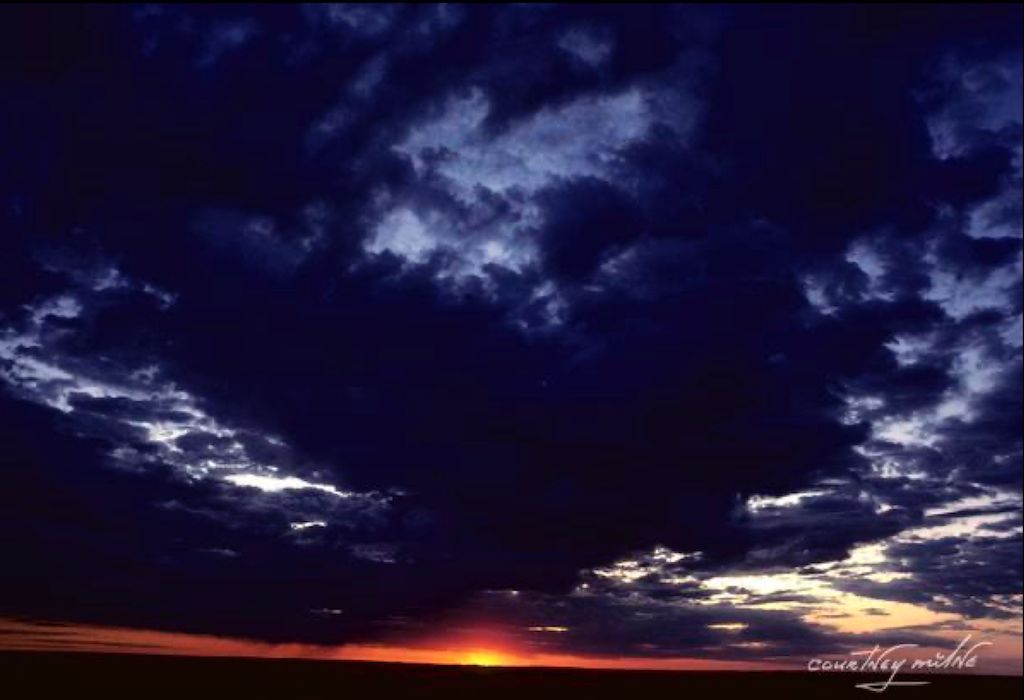


Much later, I realized that this experience was an early reflection of the poet Rilke’s decree that work of the eyes is done, now go and do heart work on all the images imprisoned within you. [see Inner Landscapes Process] Developing inner vision, intuition, imagination and heart-filled seeing fosters glimpses of what it is to be a human suspended in the unspeakable awe and majesty of our mystery-filled cosmos.
Rilke’s invitation came to its fullness for Courtney with his photography of the pool. It became a continuing exploration of what could be seen when it seemed there was nothing there ... just a flat body of water nestled under a canopy of trees. It became a vehicle to portray ways of overriding the mind’s habitual ways of seeing and responding, moving beyond a rational understanding of our material physical life, toward what many of us yearn for ~ to understand our place in this world, and in the cosmos. It became a metaphysical mirror as well as a physical reflection of the natural world of sky, wind, vegetation and color on water. It became a sacred place to commune with ... even though we continued to swim in it!
This is the age-old quest: to seek to understand our place in the universe, wondering what is beyond this small self of our physical existence, this tiny speck of humanity in an unknown vastness. Where do I fit in the seemingly unending, still-expanding cosmos? I am always thrilled and amazed by the images of the birth of stars
[see Portal 3] from the Hubble and James Webb space telescopes that transmit images from thousands of light years away from us. But they only embed my questions even deeper, and spark that yearning for a greater sense of - and connection with - these ephemeral trails through our universe, and beyond.

Then I contemplate this image from the swimming pool in our back yard. It is not ‘doctored’ ... this is as it was seen through the camera lens with the aperture adjusted to damp down the brilliant sunlight and capture the points of light embracing the debris floating in the luscious rich background tones of the waters ... it looks exactly like the NASA images of colorful gasses and stellar dust floating around in our galaxy as it reflects the light of our biggest star, the Sun. The glittering points of light are like Jung’s scintilla [Portal 2], tiny beacons sparking my imagination ... perhaps they are really star clusters birthing in the centre of our Milky Way? How could this be, when the closest are said to be an incomprehensible 7,600 light-years from Earth? [see Portal 3]
These images often leave me speechless, awakening my inner eye and reminding me to attend to other elements in my world, to hear the whispers from the universe, the messages that come to my human body through all my senses, and to be open to surprise, and delight ... and perhaps to swoon.
I have come to understand that we all have these tools of connection built into our awareness. The images seen here are all from the tangible 3-dimensional realm, but there is also much to discover in the images that come to us from other dimensions through diverse pathways like states of reverie, intuition and imagination, and through portals like dreams and inner vision practices. We just need to learn how to step into these experiences that can take us there... to allow our mental boundaries to soften, to see the magnificence and expanse of this continuum of awareness ... to open the doorways presented to us, and to step beyond the rational through the liminal thresholds, into non-dimensional spaces that offer experiences of connection and oneness consciousness that can take us to the heights of noetic truth.
In a moment of knowingness, Courtney left us with an echo of himself, a ghostly silhouette forever imprinted in this image of the winter pool adorned with snow and sunset light ...
... and later, preparing to embark on his own cosmic journey, he graciously invited us to share the key to that ecstatic path, with his final words:
“... from now on, the heart is in charge ...”
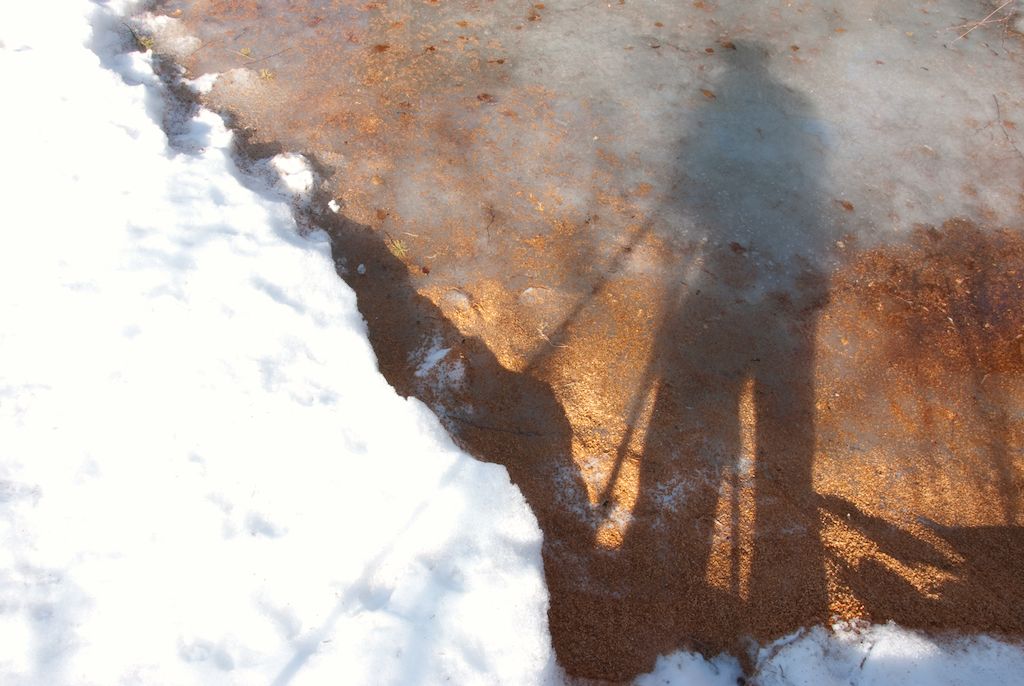
Images by Courtney Milne

